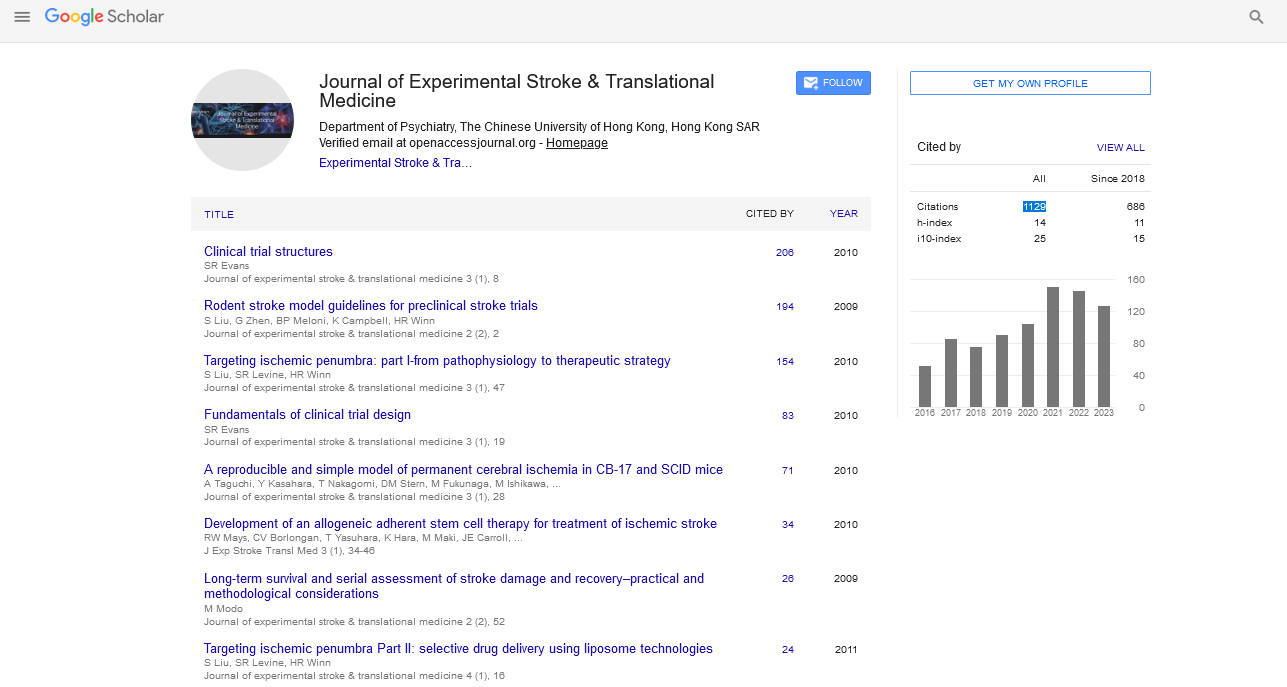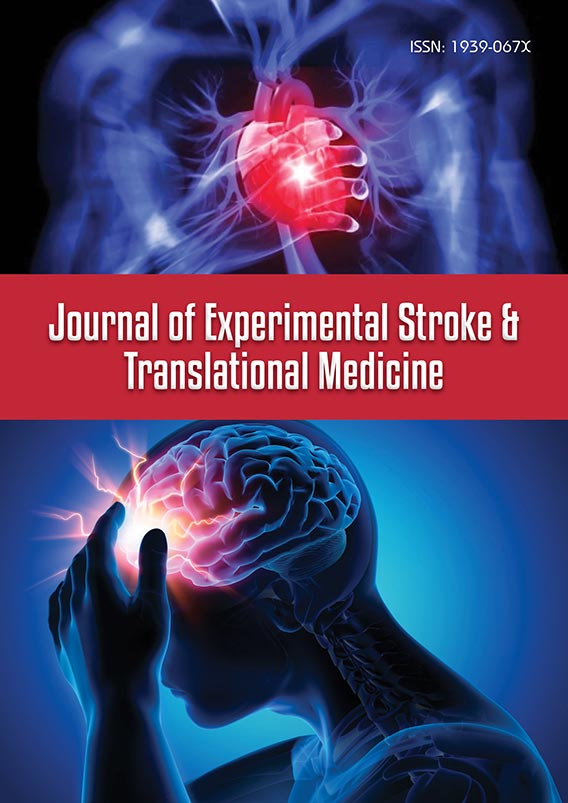Perspective - Journal of Experimental Stroke & Translational Medicine (2024) Volume 16, Issue 6
Transient Ischemic Attack: A Brief but Critical Warning Sign
- Corresponding Author:
- Susan Miles
Department of Physiotherapy, Central University of Karnataka, Kadaganchi, India
E-mail: susan@uea.ac.uk
Received: 04-Nov-2024, Manuscript No. jestm-24-153514; Editor assigned: 7-Nov-2024, PreQC No. jestm-24-153514 (PQ); Reviewed: 21-Nov-2024, QC No. jestm-24-153514; Revised: 03-Dec-2024, Manuscript No. jestm-24-153514 (R); Published: 31-Dec-2024, DOI: 10.37532/jestm.2024.16(6).291-292
Introduction
A Transient Ischemic Attack (TIA), often referred to as a “mini-stroke,” is a temporary period of neurological dysfunction caused by a brief disruption of blood flow to the brain, spinal cord or retina. While the symptoms of a TIA mimic those of a full-blown stroke, they typically resolve within minutes to hours without causing permanent damage. Despite its transient nature, a TIA serves as a critical warning sign of an impending stroke and requires immediate medical attention. Understanding the causes, symptoms, diagnosis and management of TIA is essential for preventing a more severe cerebrovascular event.
Description
Causes and risk factors
The underlying cause of a TIA is a temporary blockage of blood flow to the brain, often due to a blood clot or atherosclerosis. Several conditions and lifestyle factors contribute to the risk of developing a TIA:
Atherosclerosis: Atherosclerosis, the buildup of fatty deposits in the arteries, is a common cause of TIA. These plaques can rupture, leading to the formation of blood clots that temporarily block blood flow.
Cardiac disorders: Conditions such as atrial fibrillation (irregular heartbeat), heart valve disease and myocardial infarction increase the risk of blood clots forming in the heart and traveling to the brain, causing a TIA.
Hypertension: Chronic high blood pressure damages the walls of arteries, making them more susceptible to blockages and increasing the likelihood of a TIA.
Diabetes: Diabetes contributes to vascular damage and accelerates atherosclerosis, heightening the risk of TIA and stroke.
Lifestyle factors: Smoking, obesity, physical inactivity and excessive alcohol consumption are significant risk factors. These behaviors contribute to poor cardiovascular health and increase the likelihood of a transient ischemic attack.
Symptoms of a transient ischemic attack
The symptoms of a TIA are similar to those of a stroke but typically resolve within a short period, often lasting less than 24 hours. The most common symptoms include:
Sudden weakness or numbness: Affecting the face, arm or leg, usually on one side of the body. May cause difficulty in gripping objects or maintaining balance.
Speech difficulties: Slurred or incoherent speech. Difficulty in understanding spoken language.
Vision disturbances: Sudden loss of vision in one or both eyes. Double vision or blurred vision.
Dizziness and loss of coordination: Sudden onset of dizziness, vertigo or loss of balance and coordination.
Facial drooping: One side of the face may droop or appear uneven, especially noticeable when smiling. These symptoms appear suddenly and often resolve quickly, but they should never be ignored. Prompt medical evaluation is essential, as TIAs often precede a full-blown stroke.
Diagnosis of TIA
Diagnosing a TIA can be challenging due to the transient nature of symptoms. However, a thorough medical evaluation is necessary to identify the underlying cause and assess the risk of future strokes.
Clinical history and physical examination: A detailed history of the event, including the onset, duration and nature of symptoms, is crucial.
A neurological examination assesses cognitive function, motor skills and sensory perception.
Imaging studies
Magnetic Resonance Imaging (MRI): An MRI with diffusion-weighted imaging can detect areas of the brain affected by ischemia.
Computed Tomography (CT) scan: A CT scan is often performed to rule out hemorrhagic stroke and other brain pathologies.
Vascular imaging
Carotid ultrasound: Evaluates the carotid arteries for stenosis or plaque buildup.
CT or MR angiography: Provides detailed images of blood vessels in the brain and neck.
Cardiac evaluation
Electrocardiogram (ECG): Detects arrhythmias such as atrial fibrillation.
Echocardiography: Assesses heart structure and function, identifying potential sources of emboli.
Laboratory tests: Blood tests to evaluate cholesterol levels, blood sugar and coagulation factors can provide insights into underlying risk factors.
Management and prevention
The primary goal of TIA management is to prevent future strokes by addressing the underlying risk factors. Treatment strategies include lifestyle modifications, pharmacological interventions and in some cases, surgical procedures.
Prognosis and long-term outlook
Although a TIA does not cause permanent brain damage, it significantly increases the risk of a future stroke. Approximately 10-15% of individuals who experience a TIA will suffer a stroke within three months, with the highest risk occurring in the first 48 hours. Early recognition, timely intervention and adherence to preventive measures are crucial in reducing this risk.
Conclusion
A transient ischemic attack is a warning sign that should never be ignored. While the symptoms may resolve quickly, the underlying risk of stroke remains significant. By understanding the causes, recognizing the symptoms and seeking immediate medical attention, individuals can reduce their risk of future cerebrovascular events. Preventive measures, including lifestyle changes and appropriate medical management, play a critical role in maintaining brain and cardiovascular health. Recognizing a TIA as an opportunity for intervention can make the difference between temporary discomfort and a life-altering stroke.

